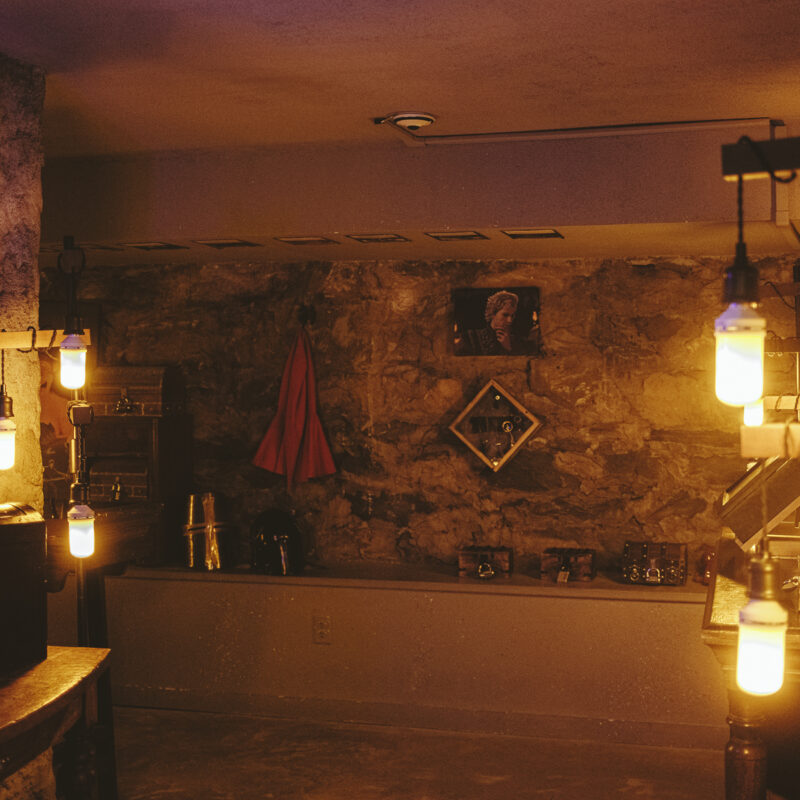Many of the neighborhoods around town are stately or old or both. Some stretch back a half dozen generations. But the neighborhood of Pantops, a sprawling mass of office parks, shopping strips, car dealerships and 2,100 people is definitely not one of those. It is a neighborhood of changes—land and buildings and people transitioning from one phase to another.
 From a pedestrian’s point of view, Pantops can be daunting. Planners envision better networks of sidewalks, crosswalks and greenways. |
| At a glance Distance from Downtown: 2 miles Distance from UVA Hospital: 3.4 miles Elementary school: Stone-Robinson or Stony Point Middle School: Burley High School: Monticello Average assessment Carriage Hill (condo): $218,700 Riverbend (condo): $172,400 Fontana (detached house): $428,900 |
Yet another branch of Mexican favorite Guadalajara is on its way, as is Topeka’s Steakhouse (a chain) and an 180,000-square- foot shopping center, Gazebo Plaza. Others, most noticeably the Pantops Shopping Center, appear to be on the opposite end of their lifespan, anchored by discount stores. The Martha Jefferson Hospital is in the midst of moving 1,200 employees into a building of more than 1 million square feet that it’s constructing on a verdant hillside at Peter Jefferson Place.
Julie Welch came to Charlottesville seven months ago because her husband got a job at UVA, working on the new student information system. She’s out walking a pair of dogs on the scenic paths of Peter Jefferson Place, which is already in the midst of early grading work on the hill’s southwestern slope. It’s a dreary winter day, but still the view of Montalto is spectacular.
“We wanted to be close to the city and not too far away from UVA,” Welch says to a reporter. “We wanted nothing to do with 29.”
Yet despite the fact that Welch and her husband live in a rented apartment at Carriage Hill just eight-tenths of a mile away, she opted to drive over for the dog walking. “There’s not enough pedestrian-friendly walkways,” Welch offers.
Welch is largely right. While technically it’s possible to get from Carriage Hill to Peter Jefferson Place by sidewalk along South Pantops Drive, the prospect isn’t very appealing. The sidewalk doesn’t fully connect on both sides of the road, forcing the pedestrian to cross a speedy three lanes in order to stay on the path. There are no delineated crosswalks, lights or other signage to slow traffic and encourage the perambulator.
 With more than 1,100 new housing units in the pipeline, the landscape on Pantops will certainly keep changing. |
Giant supermarket at the Rivanna Ridge Shopping Center is even closer, a mere 500 yards away. But nothing about the streetscape (beyond the mountain vistas) encourages that simple jaunt. It is both more convenient and appealing to just drive.
A more pedestrian future?
While Welch was trying to avoid the mess of 29N, Pantops could be considered 29N’s only slightly less ugly little sister.
It’s easy to forget that people live here, behind or betwixt the commercial strips. In 1996, there were 324 dwelling units on Pantops (which means “all-seeing”—named so by onetime owner Thomas Jefferson). By 2005, that figure had grown to 1,100 housing units for about 2,100 people.
But what makes Pantops remarkable isn’t that it’s a car-oriented mishmash of residential and commercial, but that so many want to see it morph into something else. Improving the pedestrian network is a major aspect of Albemarle County’s Pantops Master Plan, a vision 20 years into the future that maps planners’ preference about what kind of development should happen where. Major recommendations include simply connecting the sidewalk system and adding crosswalks at key intersections across Route 250, in addition to major projects like a contiguous greenway system for access to the city and other neighborhoods.
 Grading work is underway for the new Martha Jefferson Hospital at Peter Jefferson Place—another reason that more people and cars will be traveling through the neighborhood in the future. |
But development is happening regardless of what the county plans. Though the master plan clearly lays out that “suburban land use patterns should not be continued and innovative design practices and mixed use approaches are encouraged,” much of the new commercial space since 2005 has been of the suburban pan-auto variety (including more car dealerships).
Since July 2005, 1,132 additional residential units have been either submitted or approved for Pantops. Among those developments is the Pavilions at Pantops, 335 townhomes slated for 56 acres behind Rite Aide and the Montessori School. It’s owned by Southern Development.
“The first reason, the second reason and the third reason for developing there is location,” says Charlie Armstrong, general development manager for Southern Development, a local company located on Pantops. “It’s close to everything, near amenities, near a lot of jobs.”
Indeed, the Welches, who have the purchasing power to buy a home, are interested in staying at Pantops, if they can buy a reasonably priced single family detached home. Julie Welch wants to be as close to town as possible—but she also wants a modern kitchen.
Back to the present
One of those places where you’re supposed to be able to live, work and shop right now is the Riverbend apartments and condominiums. It has the look of your typical apartment complex built in the south, with outdoor stairwells and vast seas of parking. Some benches and grills appear randomly thrown on grassy patches. While the condo buildings are surrounded by sidewalks, a pedestrian who wants to go 100′ to the Pantops Shopping Center would have to battle with cars or go off-road.
The county considers this mixed-use, but is it really? Even though people live within walking distance of the grocery store, they still drive—just not as far.
That doesn’t mean no one walks. Despite the season, David Lamb treks along Route 250. I can barely hear him when we talk because of an idling 18 wheeler backed up to a traffic light. Lamb lives at Wilton Farm apartments (one of those new developments that names itself for the thing it replaced), and he is on his way to work at the Clean Machine Car Wash after walking to make a payment at the DMV and pick up a pair of shoes.
“I do a lot of walking, depending on what kind of day it is,” Lamb says. “I think it’s a nice neighborhood.”
A major residential component of Pantops are the retirement centers, most notably Westminster-Canterbury, which suffered a tragedy in December 2006. Robert Haigh, an 80-year-old former dean of Darden Business School, wanted to go shopping, according to friends. Not a mile away from Westminster-Canterbury is Rivanna Ridge, and on its face, walking there doesn’t seem like it should be a big deal. But Haigh, on medication for Parkinson’s disease, didn’t return that night and later his body was found in a field just across from the assisted living center.
It’s not that such a tragedy couldn’t happen anywhere. But it’s easier to imagine Haigh both navigating a place like Downtown, where he would have had two lanes of traffic to cross instead of six, and getting help from other pedestrians, traveling more slowly than 45mph.
For the sake of people like him, the future can’t get here quickly enough.





